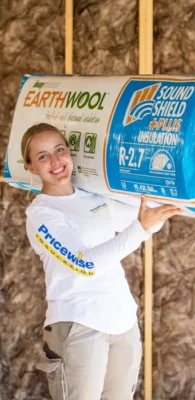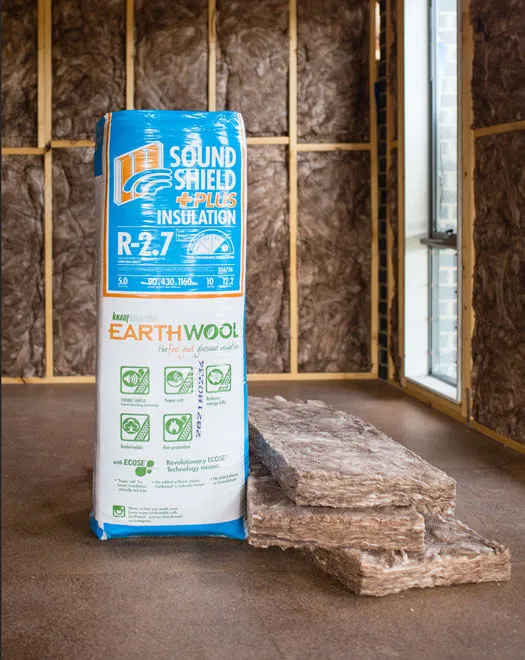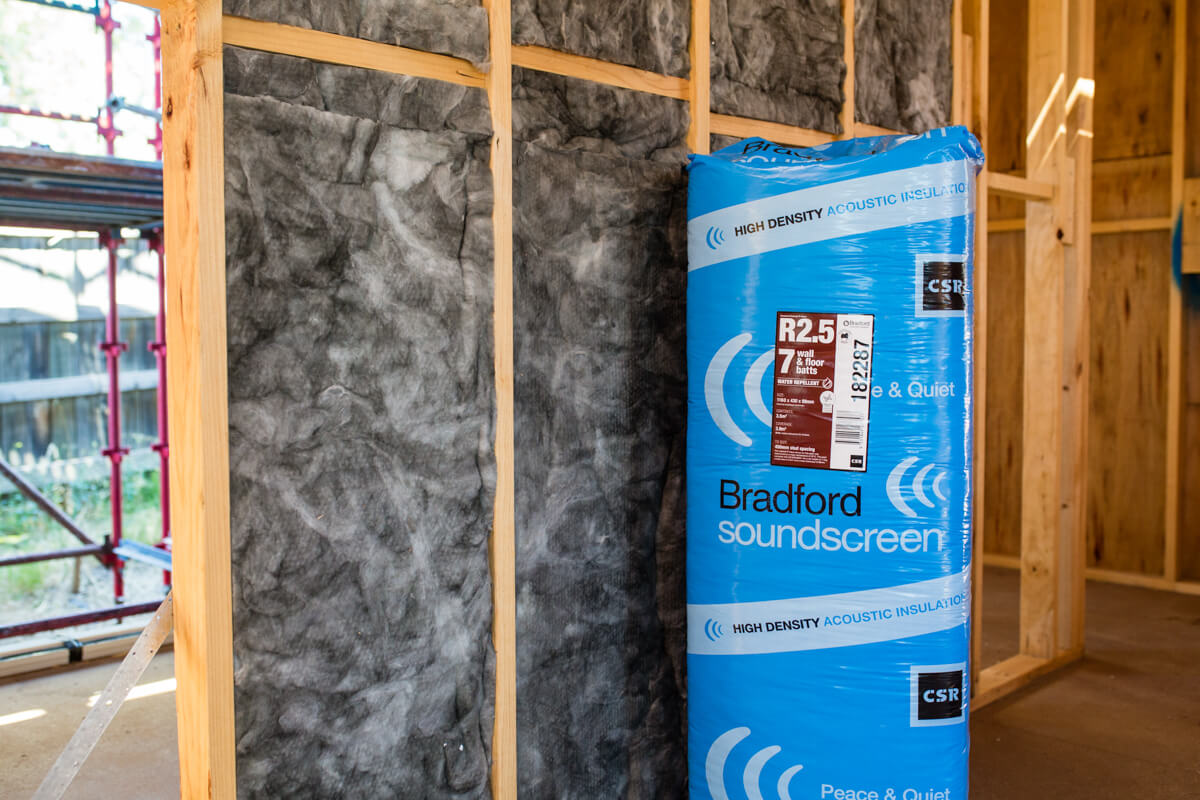Insulation Tips
How To Properly Soundproof Your Home Theatre Room
Wondering how to soundproof a home theatre room? It doesn’t have to be complex. Check out our guide below for information about choosing the right soundproofing materials so that you can get maximum use out of your home theatre.
Why Soundproofing Matters
Soundproofing your theatre room is a smart move for several reasons. Firstly, it will keep unwanted noises out of the home theatre. For example, if there is music playing, appliances running or a conversation happening in another room. Secondly, soundproofing will improve the sound quality inside the theatre room itself. That means better quality sound while you’re watching movies or playing music. Finally, soundproofing will help contain the sounds inside the room and prevent them from bothering others in the house or neighbours. Keeping your noises to a certain level may be a legal obligation if you are building a home theatre.
Understanding Sound
Knowing how sound travels can help you better understand how to soundproof a home theatre room. Sound energy travels in waves. It can either travel through the air (airborne sound) or through objects (structure borne sound). When sound waves hit a surface, they can either be reflected back into the room, transmitted through the material or absorbed by the material. To get rid of unwanted noise, we can either stop the sound waves with sound barriers or absorb the sound waves with sound absorbers.
Which Soundproof Material Is Best For Theatres And Why?
Some materials are better at stopping sound transmission than others. Hard surfaces will tend to reflect sound which is why you might hear a lot of background echo in a room with hard, flat surfaces everywhere. Some lightweight materials, such as hollow drywall, will transmit sound very easily which is why you can hear every noise in the house in many older homes. Combine good soundproof materials with the following techniques for the best results:
- mass – heavier and denser materials tend to be better at absorbing sound
- damping – some materials stop sound transmission by converting sound energy into heat energy when installed between two rigid panels such as drywall.
- decoupling – adding a space between materials can help reduce vibration transfer
- absorption – some materials are particularly good at absorbing sound waves
Video – Difference Between Thermal and Acoustic Insulation
How To Soundproof A Home Theatre Room
There are many different methods to soundproof a room, some more effective than others. The most effective methods involve structural design and access to the wall cavity. These are best done during construction or major renovations. If you are converting an existing room into a home theatre, there are some options that require minimal change to the room’s structure.
1. Acoustic Panels
Home theatre acoustic panels are rigid boards that can be hung or attached to the walls and ceiling to help absorb sound waves and improve acoustic quality. Acoustic panels are often made from polyester and are effective at absorbing mid to high frequencies. They aren’t as effective for low frequencies. The range of Quietspace acoustic panels by Autex are an effective way to reduce background echo and reverberations inside a room. Quietspace acoustic panels are available in a wide range of styles and designs, from simple flat boards to three dimensional shapes. The easy-to-install designs are ideal if you are converting an existing room into a home theatre and don’t want to remove the drywall.
2. Mass Loaded Vinyl
Hollow walls are very poor at stopping sound transfer. One way of improving the soundproofing properties is to add mass to the wall. This could be done in a range of methods, for example by installing a second drywall or by adding mass loaded vinyl to your walls. Mass loaded vinyl is a dense, heavy weight material which is used to block sound waves. Keep in mind that adding mass alone won’t always get you the best results. Typically mass increasing techniques are used in conjunction with decoupling techniques and sound insulation.
3. Decoupling
Walls that are too close together can transmit noise by vibrating against each other. Decoupling is a method of separating the two parts of a wall to reduce vibration transmission of noise. There are a few ways of decoupling a wall, including:
- double stud wall
- staggered stud wall
- sound isolation clips
- soundproofing insulation
4. Acoustic Insulation
Installing acoustic insulation inside the walls and ceiling cavities is the best way to soundproof a theatre room, home office, media room, bedroom or any other space in your home. Acoustic insulation (also known as sound insulation) is a type of bulk insulation that is thicker and more dense than traditional thermal insulation. You can buy acoustic insulation in pre-cut batts which are designed to fit between the timber joists in most Australian homes. Acoustic insulation batts are installed in the walls, ceilings and sometimes even the floors to help absorb and reduce noise transfer. The best time for insulation is when a new home is being built before the plaster is hung. It is possible to install insulation in an existing wall as long as there is access to the wall, ceiling or floor cavity.
Best Acoustic Insulation For Home Theatres
At Pricewise Insulation, we supply a number of the top acoustic insulation brands in Australia. Some of our most popular products for soundproofing home theatres are:
Knauf Earthwool:
- R2.7 HD Earthwool SoundShield Insulation – Walls
- R4.0 HD Earthwool SoundShield Insulation – Ground Floor Ceiling (Between Floors)
Bradford SoundScreen:
- R2.5 Bradford SoundScreen Insulation – Walls
- R3.1 Bradford SoundScreen Insulation – Ground Floor Ceiling (Between Floors)
Fletcher Pink Batts:
- R2.7 Pink Soundbreak Insulation Batts – Walls
- R3.1 Pink Soundbreak Insulation Batts – Ground Floor Ceiling (Between Floors)
5. Seal Gaps and Soundproof Windows
Sound can get through any tiny gaps, so it’s important to ensure you seal up gaps around the doors and windows of the home theatre room. Consider getting a heavier door to improve sound proofing, and be sure to install a seal at the bottom of the door too. Windows can be a particularly difficult hurdle when it comes to soundproofing. Consider double or triple glazing to help reduce sound transmission. If the little gaps between glass panels in double and triple glazing are vacuumed sealed, they will be even more effective.
Buy Acoustic Insulation Online Today
If you need advice on how to soundproof a home theatre room, don’t hesitate to get in touch with the specialists at Pricewise Insulation. We offer a wide range of acoustic insulation solutions that are ideal for theatre rooms, media rooms, bedrooms and more.




I am looking to soundproof my media room in an under construction house. I would like to discuss the options you have and a quote based on the discussion.
Hi Ashok,
Thank you for your comment. There are a number of products that can be used for theatre rooms, as outlined in this blog post. We typically recommend R2.7HD Earthwool Sound Shield Insulation for the internal walls and R4.0HD Earthwool Sound Shield Insulation for the ceilings of home theatre rooms. Both of these products are effective at reducing the transfer of noise between rooms.
To get a personalised quote, please get in touch with our team on 1300 729 639 or via email at sales@pricewise.com.au and we will assist you further.
Kind regards,
Christa
would like to soundproof my media room wall it already has the screen so not sure
Hi Neesha,
There are a few solutions we can offer to help soundproof your media room. If there’s currently no insulation in the walls or ceiling, a blow-in insulation option may be suitable.
We recommend giving our sales team a call on 1300 729 639 so we can better understand your setup and the specific noise issues you’re trying to address. From there, we can suggest the most effective solution for your space.